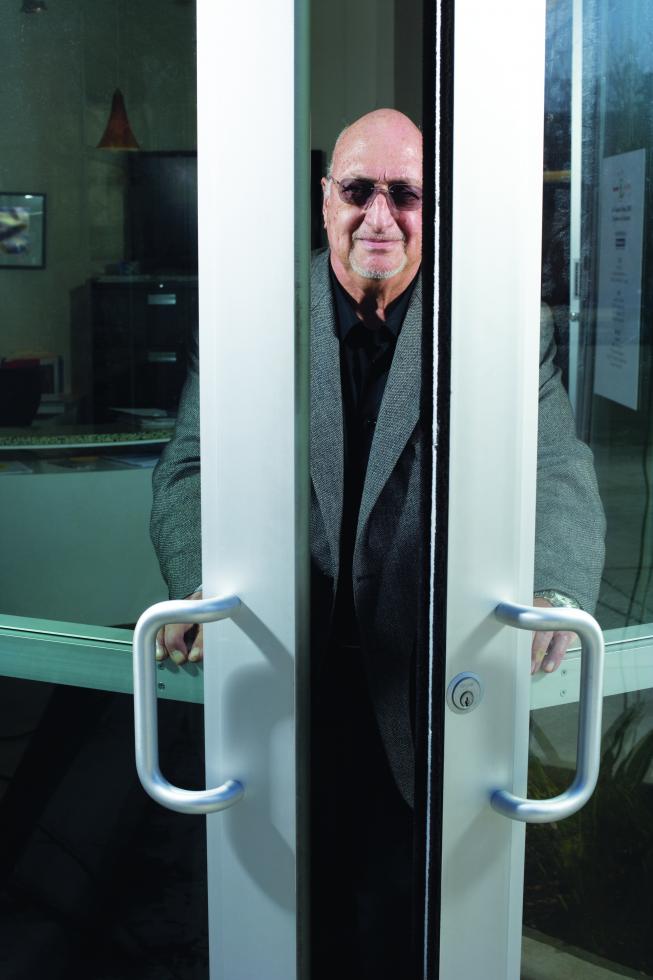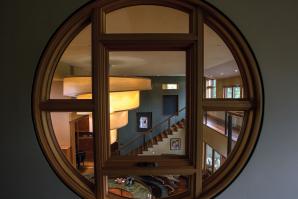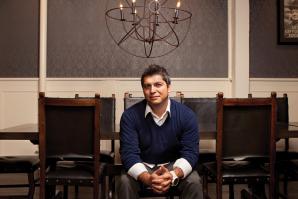Don Comstock, the executive director of the Central Valley
chapter of the American Institute for Architects, has had to
close his doors on Fridays.

In more than 40 years as an architect, Don Comstock has seen the profession weather some rough periods.
“I have never seen anything like this, not in my lifetime,” says Comstock, executive director of the Central Valley chapter of the American Institute of Architects. Unemployment among local architects may have hit 20 percent to 25 percent, he estimates.
The AIA chapter is doing what it can to help members sharpen their skills or get advice. It has seminars, job postings and other resources.
Not on Fridays though. The slump is so bad that even the chapter’s midtown Sacramento office is closed on Fridays. Upstairs in the same building, the office of PHA Architects has been closed for months. At Williams + Paddon Architects + Planners Inc. in Roseville, everyone gets Friday afternoon off whether they want it or not. At Dreyfuss & Blackford Architects in Sacramento, managing principal John Webre watches the resumés stack up on his desk.
“A year ago, there were maybe 20 resumes on file — working resumes, sent within the last six months. Now there are over 200,” Webre says. “There are a lot of people out there looking for a job. I’ve been president for nearly 20 years. This has been the toughest I have seen, and we have gone through three cycles when I have been steering the boat.”
The small firms started hurting first, in late 2008, Comstock says. But now it’s affecting everyone. Layoffs have been across the board, hitting young and experienced architects alike.
“A few select firms have gotten some decent public jobs awarded to them. There are other institutional firms — especially those doing schools — that have been hit hard,” he says.
The lack of work is not a Northern California phenomenon. Each month, the AIA releases its nationwide Architecture Billings Index. It’s based on a survey asking select members whether billings increased, decreased or stayed the same that month. Any score over 50 means work is increasing, any number less than 50 means demand is down.
The index hasn’t been over 50 since the start of 2008.
“We’re now two straight years of either a little bit worse or a lot worse than the last month,” says Kermit Baker, the AIA’s chief economist. “It’s kind of dire circumstances.”
He estimates payroll for architecture firms nationally is down about 18 percent from its most recent peak in the summer of 2008.
Baker blames the tight credit markets. There are viable projects that can’t get financing.
There are a few encouraging signs, but not enough. Firms say they see steady gains in inquiries for new work. They also see a lot more competition for those projects. The net result is that few firms are seeing revenue increase.
Webre, for instance, considers Dreyfuss & Blackford to be doing well, and even then the firm is only holding steady. “Ironically, we have had the good fortune of landing a very big job just before the economy went into the toilet,” Webre says. Now the firm has signed on for a couple of large courthouse projects that should see it through until the economy picks up.
“But we certainly are not expanding,” he adds.
Nearly 4 percent of firms nationally don’t expect to survive the year, according to the AIA. Most of the rest plan to do more with less in 2010, Baker says. More than a third of the AIA membership plans to take on new kinds of buildings, expand their geographic reach, or both.
Williams + Paddon ran one of the region’s rare want ads for architects in January. Along with skills in design and project management was an additional requirement: “Must be fluent in Mandarin and possess excellent verbal and written communication skills, as well as an excellent negotiator and have an in-depth understanding of the Chinese culture.”
“We’ve been getting increasingly a number of contacts for projects in China. We are trying to build a base to pursue that,” says chief executive Jim Williams.
Architecture sits at the leading edge of the building industry. Before anyone can lease space, before anyone can pour concrete, an architect has to design the building. So like the rest of the industry, architecture goes through its booms and busts.
“We’ve always been kind of an extreme,” Webre says. “When things are good they are very, very good, and when they are bad they are awful.”
About five years ago, the industry was complaining of a shortage of talent. Companies were sending drawings off shore, Baker says.
The profession hit rough patches in 2002, 1991, the 1980s and in the 1970s too. The difference was that none of them was this severe or widespread. Architects had more options to tide them over until work picked up again.
In the ’70s, people could use the down time to update the details on drawings and get them all filed, Comstock says. Now the drawings are all on computers. In 1991, a lot of young architects used their design skills to land computer animation jobs. But that field was emerging then and is not as easy to break into now.
What especially worries professionals is the new crop of graduates from architecture programs. To get a license, an architect needs to first work in the field for a few years under supervision, much like an apprenticeship. The pay in those years is usually low.
“I am very concerned about losing three or four or five years of people who may go somewhere else,” Comstock says.
If they do, they may lose their edge and their incentive. “It is difficult, if you have been out of the profession for two or three years, to come back in and relearn some of those technical skills and start at that low salary levels,” Baker says.
When the profession was going through its last boom, architectural firms were scrambling for people with 15 or so years of experience to put into leadership roles — people who weren’t in the business because they hadn’t been able to find entry-level jobs in the early ’90s.
“Most of us ended up leaving the profession,” says Andrew Goldberg, who earned an architecture degree in 1991 and now works as the AIA’s senior director of federal relations. “In my case, my other interest was politics. I got involved in working on campaigns just to bide my time, essentially.”
It was only about seven years ago that he was able to meld his interests and experience with a job at the AIA’s national headquarters in Washington.
“My job now is working on federal government relations to find policies and programs to help people weather the storm a little,” Goldberg says. But even the AIA has to take the long view. Goldberg is basically helping to prime the pump, pushing tax incentives for green buildings or more loans to small business with the idea that it will mean more work for architects eventually.
The new generation of architects is finding some help right in school. In San Luis Obispo, Cal Poly has one of the highest rated architecture programs in the country. After 45 years, it also has about 6,200 alumni in top jobs at prestigious firms across the country, says department head Henri de Hahn. The college is unfolding a plan where students can work in alumni offices for academic credit, and thus at a steep discount to the firm.
“If the employers could maybe tap into the students a second time, they are willing to do a donation,” de Hahn says. “Education is about an investment. I think our alumni understand that.”
Early results have been encouraging, de Hahn says. One Los Angeles firm wants to hire six of his students.
But internships take a lot of extra effort on the firm’s part, says Webre of Dreyfuss & Blackford.
“My counsel to those who are looking for work is that they have to find an edge that makes them more desirable than the next guy,” he says. With all the interest in green building, idle hours are a good time to take the examination offered by the U.S. Green Building Council for certification in its Leadership in Energy and Environmental Design program. Another option is to take courses in building information modeling. There already are signs that the new generation, if not lost to the profession, is greatly distracted. The number of associate members in the AIA — the interns and recent grads who aren’t yet licensed — has fallen off for the first time in years.
At the Central Valley chapter, Comstock is watching to see if longtime members follow suit. The chapter added to its membership total of about 850 last year, but Comstock says he is reserving judgment. In the first year of a downturn, members tend to see the local AIA chapter as a good networking venue, he says. It’s the second year of the downturn that tells the tale, and it’s too early in 2010 to know how many will renew.
In the meantime, the local chapters offer what help they can. Comstock says he may ask the Portland chapter about a seminar it held titled “Alternative Careers for Design Professionals.” Baker has heard of other AIA chapters, and even some private firms, that have made idle computers available for architects to learn new software. Others have offered to help young architects study for registration exams.
For those architects who can hang on through the downturn, the odds are good that eventually they’ll find themselves in high demand. There is a tradition that the steeper the downturn, the steeper the recovery. And demographics could give this next upturn an extra boost. “We have an industry that is still somewhat dominated by baby boomers,” Williams says. “I think as those baby boomers start retiring, that’s when the baby bust comes into play. There are significantly less people right on the heels of the baby boomers.”
For firms that have clients, of course, this is a buyer’s market for architects.
“Right now for the smart firm, they can do some clearing of dead wood and retain the best talent,” Webre says. “What happens during these lean times is only the good, the proven, those with a track record … get jobs. It’s a cruel fact of the marketplace that the ones who are just entering the work force without any experience have a really limited chance at getting a job.”
At AIA headquarters, Baker puts the best face he can on the outlook for this year, figuring that the profession will see a bottom early in the second half.
“But having reached a bottom doesn’t mean they are suddenly calling back the employees that were laid off during this downturn,” he adds.
Recommended For You

Build It Beautiful
Designer homes in the city of trees
The housing market may still be depressed, but here in the Capital Region there is no scarcity of talent when it comes to residential architecture and interior décor.

Intricate Infill
Architectural Designer Marvin Maldonado
“First off, I’m not an architect,” says Marvin Maldonado, a Sacramento-based building designer. He’s really more of a dreamer with a architecture degree.
But as we all know, dreams can get tricky.


